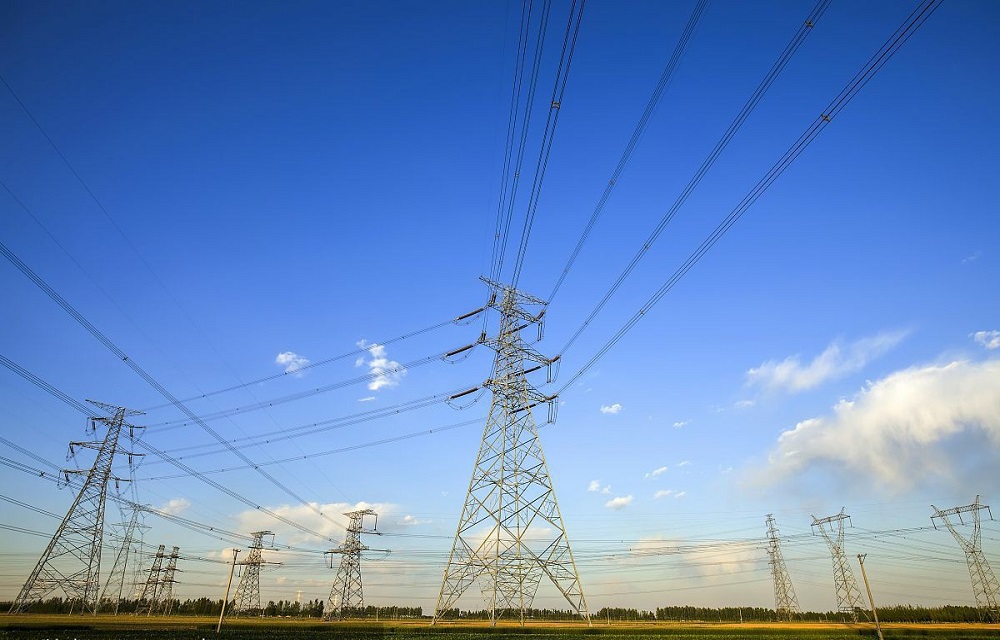Basic Knowledge of Overhead Power Transmission Lines -- Towers
2025-08-18
Towers support the conductors, overhead ground wires, and other accessories of overhead power transmission lines. They ensure that conductors, overhead ground wires, and towers maintain a certain safe distance from each other, and that conductors maintain an allowable safe distance from the ground, crossing structures, or other facilities.
Power line towers worldwide are constructed using wooden structures, reinforced concrete structures, and steel structures. Typically, wooden, reinforced concrete, and steel pipe-type pole structures are referred to as poles, while tower-shaped steel structures and reinforced concrete chimney-shaped structures are referred to as towers. Therefore, the structural components of power transmission line towers are poles and towers, collectively referred to as towers.

(1) Material Classification
Based on material type, domestic towers can be classified into reinforced concrete poles, steel towers, and steel pipe poles (made from the same material as steel towers).
Reinforced concrete poles are made of concrete and reinforcing bars or steel wires, commonly referred to as poles. They primarily consist of main poles, clamps, bolts, crossbeams, transverse beams, suspension rods, and guy wire systems. The cross-sectional forms of reinforced concrete poles include square, octagonal, I-shaped, ring-shaped, or other irregular cross-sections. In power transmission lines, ring-shaped cross-section reinforced concrete poles are commonly used.
Reinforced concrete poles are classified by the number of poles into single poles, double poles, and triple poles. Self-supporting double poles have two structural types: one with cross beams and one without cross beams.
Towers are steel structures made of structural steel. They primarily consist of three main parts: the tower head, tower body, and tower legs. If it is a guyed tower, it also includes the guy wire system. For towers with conductors arranged in a triangular or vertical pattern, the section above the lower crossarm is referred to as the tower head. For towers with conductors arranged horizontally, the section below (or above) the crossarm is referred to as the tower head. For cup-shaped and cat-head-shaped tower heads, the section from the crossarm to the tower neck is referred to as the tower neck, and the sides are referred to as the curved arms. The first section of the truss above the foundation is referred to as the tower leg. All truss structures except the tower head and tower legs are referred to as the tower body.
Most towers domestically and internationally are manufactured using hot-rolled equal-angle steel and assembled into a spatial truss structure using bolts. The primary materials used for tower manufacturing include equal-angle steel, steel pipes, and composite materials, resulting in angle steel towers, steel pipe towers, and composite towers, respectively.
Steel pipe poles are steel pipe structures composed of single or multiple steel pipe components rigidly connected.
(2) Classification by circuit number
Based on the number of circuits, towers can be classified into single-circuit towers, double-circuit towers, and multi-circuit towers. A tower supporting a single circuit is a single-circuit tower; a tower supporting two circuits of different voltages and frequencies is a double-circuit tower; and a tower supporting two or more circuits of different voltages and frequencies is a multi-circuit tower.
(3) Classification by Support Method
Towers can be classified into two major categories based on their support method: guyed towers and self-supporting towers. For towers, guyed towers can save a significant amount of steel compared to self-supporting towers, approximately 30%, but guyed towers are not suitable for use in urban power grids due to their large land area requirements.
(4) Classification by Different Loading Conditions
Suspension-type towers support the weight of conductors and overhead ground wires, as well as wind forces acting on them, but do not bear the tension of the conductors during construction or normal operation. Conductors and overhead ground wires are not interrupted at suspension towers and are positioned along straight segments of the conductor and overhead ground wire. The function of suspension towers is solely to serve as support structures for suspending conductors and overhead ground wires via suspension insulator strings and hardware strings (towers located between two tension towers).
Suspension-type towers are further divided into suspension-type straight towers and suspension-type angle towers. When a suspension-type straight tower needs to accommodate a small-angle turn without increasing the tower head dimensions, the turning angle should not exceed 3°. For suspension-type angle towers, the turning angle should not exceed 10° for lines at or below 330kV, and should not exceed 20° for lines at or above 500kV.
Tension towers not only support the weight and wind force of conductors and overhead ground wires but also bear the tension of these lines. Conductors and overhead ground wires are disconnected at tension towers, are connected via tension insulator strings and hardware strings arranged horizontally on both sides, and are positioned on the straight (or angled) segments of the conductors and overhead ground wires. This reduces the length of consecutive spans along the line's longitudinal direction, facilitating line construction and maintenance, and controlling the range of potential tower collapses along the line's longitudinal direction. Tension-type towers are classified into tension straight towers, tension angle towers, and terminal towers.
For transposition towers, crossing towers, and other special towers such as branch or T-junction towers, they can be categorized into suspension-type or tension-type towers based on the connection method between the insulators and the towers.

Hey, I’m Chunjian Shu
"X.Y. Tower: Reliable, innovative solutions for high-quality towers and electrical equipment with professional service.
